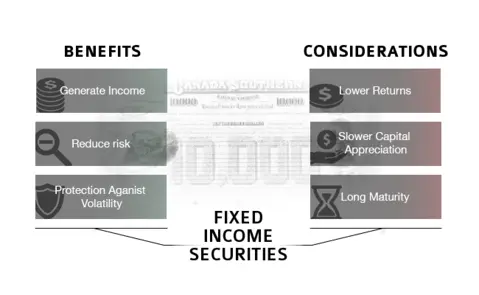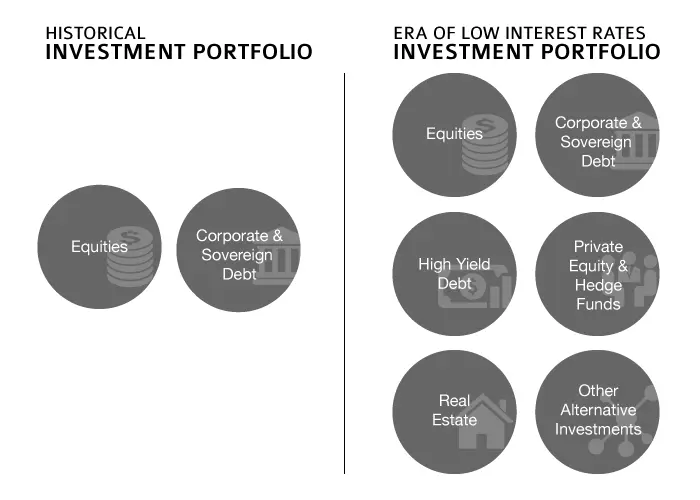OVERVIEW
What are Fixed Income Securities?
Fixed income securities are debt instruments issued by a government, corporation, or other legal entity to finance and expand their operations or pay off existing obligations. These instruments provide investors with a return in the form of periodic payments and the eventual return of principal investment at the bond’s maturity date. The purchase of fixed-income products represents a loan by the investor to the issuer.
Fixed Income Security – Bond
A bond, the most prominent fixed income security, is an investment of a year or more that provides investors with fixed or variable interest payments (coupon payments) on a fixed payment schedule (e.g. semiannually or annually) and full principal payment at the end of the bond’s life (maturity). The major issuers of bonds are corporations and governments that aim to raise substantial amounts of capital not readily available through other fundraising options.
Other Fixed Income Securities
Other notable fixed income securities include: treasury bills, guaranteed investment certificates (GICs), mortgages, certificate of deposits (CDs), and asset backed securities.
Benefits of Fixed Income Securities
Fixed income securities generate regular income, reduce overall risk, and protect against volatility in a portfolio. They offer investors a stable, low-risk option to generate a steady flow of income and secure principal. These predictable returns permit investors to take riskier investments with other asset classes (e.g. equity, alternative investments) in a portfolio. In addition, because fixed income securities are debt obligations, fixed income holders have a priority claim on assets over other asset classes (i.e. common shares) in the event of default. This means that fixed income investors have a higher chance of being repaid if a corporation declares bankruptcy. On the other hand, fixed income securities, such as bonds, allow corporations access to capital without diluting the current shareholder’s equity. Furthermore, bonds often allow corporations to achieve favorable cost of funding and longer term financing than available options in other capital markets.
Other Fixed Income Securities Considerations
Fixed income securities carry lower risk than other equity investments, therefore, they generally generate lower returns and slower capital appreciation. Coupled with the relatively long lifetime of fixed income securities, there is a risk of principal being tied up for long lengths of time (i.e. liquidity risk), while more attractive investment opportunities become available. Bond prices are heavily reliant on the prevailing market interest rates, so investors should be familiar with macroeconomic conditions when investing. Bond investors should perform adequate credit analysis to manage default risk as well.

A NEW ERA OF PORTFOLIO MANAGEMENT
Portfolio Management in the Low Yield Environment
Fixed income has traditionally offered investors the opportunity to earn stable cash flows while preserving capital. However, with global interest rates near historical lows, opportunities for yield and capital returns are in many ways now limited. As a result, investors have been forced to question historical investing frameworks, and have begun searching for alternatives.

In this new low yield environment, a significant flow of funds has been into equities, which has driven historically high valuations. For example, the S&P 500 Index currently has a ~25x Price / Earnings multiple, versus a historical average of ~16x. In addition, alternative investments including high yield bonds, private equity, hedge funds, real estate, commodities, etc. have become a more permanent feature in investment portfolios due to generally higher yields. As recent research by Callan Associates shows, in order to achieve a 7.5% annualized return in 2015, an investor would need a highly diversified portfolio that includes a mixture of alternative investments and traditional investments. The challenge with the increase in alternative investments is that they do no not currently offer investors the efficiency or transparency of equities.
IN THE PRESS
"Overbond Ltd., the first end-to-end fixed income markets fintech platform for AI predictive analytics, has launched COBI Pricing, a new proprietary bond pricing and liquidity risk management automation solution. COBI (Corporate and Government Bond Intelligence) is a comprehensive..."






